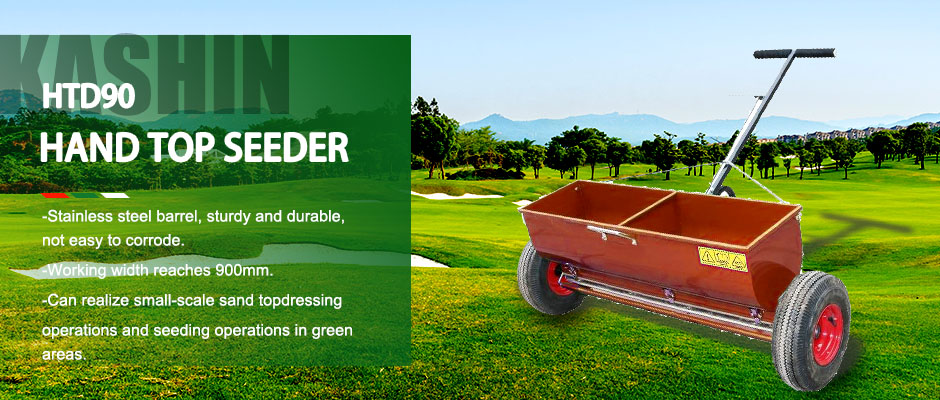In summer, lawn diseases are common, and lawn maintenance becomes particularly important. Common lawn maintenance and management issues are summarized as follows:
Lawn mowing: Amount of mowing: The principle of “1/3 of the amount to be cut” should be followed, and excessive mowing should be avoided. The amount of pruning each time should not exceed 1/3 of the total longitudinal height of the stems and leaves, and the rhizomes should not be damaged. Otherwise, the normal growth of the lawn grass will be affected due to the imbalance between the growth of above-ground stems and leaves and the growth of underground roots. Therefore, the amount of pruning of the lawn must be adjusted. Be strict about it. Pruning height (stubble height): It is the vertical height of the above-ground branches after pruning. Each type of lawn grass has its specific range of cutting heights within which satisfactory lawn mowing results can be achieved. When it is lower than the shearing height range, too many green stems and leaves will be removed, resulting in stem and leaf peeling, old stems being exposed, and even the ground being exposed; when it is higher than the shearing height range, the lawn will become sparse during the stress period, and the lawn will become sparse. It is easily eaten by weeds, causing the lawn grass to become fluffy, soft or even lodging, making it difficult to form a satisfactory lawn landscape. Different turfgrasses tolerate different mowing heights due to their different biological characteristics.Turfgrasses that grow upright, such as bluegrass, tall fescue, etc., are generally not resistant to low mowing; turfgrasses with stolons, such as creeping bentgrass and bermudagrass, are resistant to low mowing. Cool-season turfgrass enters the thermal dormancy period and its resistance is reduced, so the stubble height should be appropriately increased. The pruning frequency should be pruned once every 2-3 weeks. When pruning, pay attention to the pruning direction to prevent the appearance of strips with different light and dark colors. When a disease occurs, the lawnmower blades should be disinfected when mowing the lawn to prevent the disease from spreading.
Lawn Fertilization: When fertilizing lawns in summer, use nitrogen fertilizer with caution and increase the amount of potassium fertilizer. If nitrogen fertilizer is not applied in summer, the leaves of cool-season lawns will turn yellow and have strong disease resistance. If too much nitrogen fertilizer is applied, serious diseases will occur and the quality of the lawn will decline sharply. When using fertilizers, you can choose lawn-specific fertilizers. An ideal lawn-specific fertilizer can not only reasonably adjust the proportion of nitrogen, phosphorus, potassium and other fertilizers, but also contain an appropriate amount of water-soluble nitrogen and water-insoluble nitrogen. It combines speed and slowness to reasonably control nitrogen. of release. Trace elements are often added in the form of sulfates, and some also add pesticides, fungicides, etc., so that fertilization, sterilization and insect removal can be completed at one time.
Timely watering: Accurately determine the timing of lawn irrigation. When the color of the lawn leaves changes from bright to dark or the soil turns light white, the lawn needs irrigation. For mature lawns, water should be “watered as soon as it is dry and thoroughly once”, while for immature lawns, “a small amount should be watered several times” to ensure normal growth of the lawn. Watering should be done in the early morning or evening when there is no wind or breeze to reduce the wet time of the leaf surface, thus reducing the chance of disease. Watering should be avoided at noon and night in summer. Watering at noon can easily cause lawn burns, and strong evaporation will reduce the utilization rate of irrigation water, so watering at noon should be avoided. Irrigating at night will keep the lawn wet all night, which can easily lead to diseases.
Weeds and diseases In the summer, some grassy weeds such as crabgrass, foxtail grass, and barnyardgrass in the lawn are relatively old. During the control process, the dilution factor of the herbicide must be increased. Cool-season lawns are prone to diseases such as Pythium wilt, sickle wilt, and summer spot during this season. During the management and maintenance process, attention should be paid to spraying the protective fungicide Luan. Once the lawn becomes infected, therapeutic fungicides such as Lvkang, Sujuqing, and Xiabanol should be selected for prevention and control.
Pest Control July and August are the periods when leaf-eating pests such as meadow borer larvae and armyworms harm the lawn, so inspections should be done. Choose Moth Borer Cleaner 800 times for spray control, which is safe and does not pollute the environment. It can quickly knock down pests and protect natural enemies. Diflubenzuron can also be used for control.
Post time: Jul-16-2024

